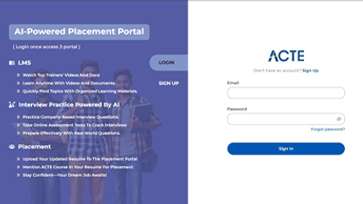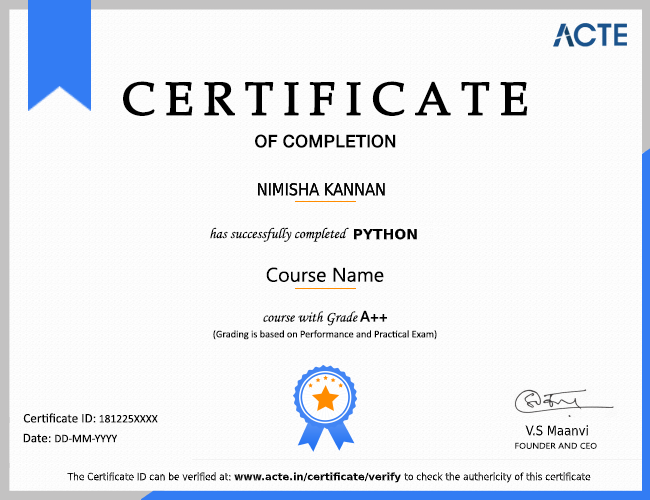All important domain ideas will be learned and covered. In addition, through work on real-world projects, you will also receive hands-on experience. The focus of this course is on the use of Kibana in Elasticsearch to analyze information. From simple aggregation-bases charts to complicated geo-based visualization to complex time series visualizations – lectures, experiments, and Q & A sessions – you'll learn about the core principles of data analytics using Kibana Online Training. You'll also learn how to construct visuals, dashboards and manage Kibana by handling stored items and generating spaces across a number of data sets.
Additional Info
About Kibana :
Kibana is a free and open source application that stays above Elastic Stack, which enables you to search and view data identified in Elasticsearch. Known as the Elastic Stack marriage tool (formerly known as ELK Stack after Elasticsearch, Logstash, and Kibana), Kibana Online Course also serves as a visual user interface for monitoring, managing, and protecting the Elastic Stack collection - and the hub in the middle of the built-in solutions built into Elastic Stack. Developed in 2013 within the Elasticsearch community, Kibana has grown into a window for Elastic Stack itself, offering a website for users and companies.
Kibana is an open source-based viewing tool mainly used to analyze large volume logs in the form of line graph, bar graph, pie charts, temperature maps, circuit maps, link maps, gauge, objectives, time period etc. It's easy to predict or detect changes in error trends or other important input source events.Kibana works in conjunction with Elasticsearch and Logstash that combine to form the so-called ELK stack.
What is ELK Stack :
ELK stands for Elasticsearch, Logstash, and Kibana. ELK is one of the most popular log management platform used worldwide for log analysis. In the ELK stack, Logstash releases login data or other events from different input sources. Processes events and saves them later in Elasticsearch. Kibana is a visual tool, which accesses logs from Elasticsearch and is able to show the user in the form of a line graph, bar graph, pie charts etc.
Kibana Online Training is a data recognition tool and open source. It is used to monitor application and charges for operating intelligence. It provides powerful and easy-to-use features such as histograms, line graphs, pie charts, temperature maps, and built-in geospatial support.
Whether we are a consumer or a manager, Kibana offers three key functions to make our data work.
- Open source view frame. By using Kibana we can look at the results of Elasticsearch, and create attractive dashboards and views.
- It is a user interface that manages Elastic Stack. Manages security settings assigns user functions, takes snapshots, collects data, and much more. The Kibana Online Training user interface allows us to perform all of these tasks.
- An integrated platform for solutions provided by Elastic. It is a center for access to these and other features, from log analytics to content availability to SIEM.
Features of Kibana :
Kibana offers its users the following features :
- Visual perception :
Kibana has many ways to visualize data in a simple way. Some of them are widely used direct bar chart, straight bar chart, pie chart, line graph, temperature map etc.
- Dashboard :
When we are ready to be seen, everything can be placed on one board - Dashboard. Looking at the different sections together gives you a clear overview of what is really happening.
- Dev tools :
You can work with your directions using dev tools. Beginners can add dummy references from dev tools and add, update, delete data and use references to create visibility.
- Reports :
All visual and dashboard data can be converted into reports (CSV format), coded or in the form of URLs to be shared with others.
- Filters and search query :
You can use filters and search queries to get the required information to enter something from the dashboard or visual recognition tool.
- Plugins :
You can add third party plugins to add a new look or other installation of the UI in the Combine.
- Integration and regional maps :
The interactive and regional map of Kibana helps to visualize a map of the area that gives a true view of the data.
- Timelion :
Timelion, also called the timeline, is one of the tools used to measure time-based data analysis. In order to work with the timeline, we need to use simple descriptive language that helps us connect to the index and perform calculations on the data to get the results we need. It helps a lot by comparing data in the previous cycle by week, month etc.
- Canvas :
Canvas is another powerful feature in Kibana. Using canvas visibility, you can manage your data with a variety of color combinations, shapes, text, multiple pages called workpad.
Why use Kibana?
Kibana is the official visual connector of Elasticsearch. Elasticsearch users will find Kibana as the most efficient interface for data acquisition and performance management for their Elastic Stack life. Kibana talks about multiple use cases. Elastic has invested heavily in the launch of the virtual reality. Users use Kibana's built-in features for use cases such as APM, security statistics, business statistics, downtime monitoring, geospatial analytics, and more.
Kibana has a strong supportive community. As a free and open interface, Kibana has seen strong acquisitions and community contributions. The level of experience of Kibana users varies greatly - documentation, education, and community support reflect the wide range of technologies. Elastic also provides individual training and support to help users get up and running.
What is Kibana used for?
Kibana's strong integration with Elasticsearch and the larger Elastic Stack makes it ideal for supporting the following :
Search, view, and visualize data identified in Elasticsearch and analyze data on the construction of bar charts, pie charts, tables, histograms and maps. Dashboard View includes these visual elements that will be shared via a browser to provide real-time analytics views on large amounts of data to support usage cases such as :
- Log in and out of analytics
- Metrics for infrastructure and container monitoring
- Application Performance Monitoring (APM)
- Geospatial data analysis and detection
- Security statistics
- Business statistics
Monitor, manage, and protect the Elastic Stack model with a web interface. Centralized to finding built-in Elastic Stack solutions for monitoring, security, and business search systems.
How does visualizing data in Kibana work?
Kibana enables visual analysis of data from the Elasticsearch index or multiple indexes. Indices are created when Logstash (largescale ingestor) or Beats (a set of single data senders) imports random data from log files and other sources and converts it into a standard format for Elasticsearch storage and search functionality.
Kibana's interface allows users to query data on Elasticsearch indices and visualize results with standard chart options or built-in applications such as Lens, Canvas, and Maps. Users can choose between different types of chart, change number combinations, and then filter in specific data segments.
Roles and Responsibilites :
The following roles of work will benefit from doing this course :
- Database administrators
- System Engineers
- Software developers
Database Administrators Responsibilities :
1. Software Installation and Maintenance :
DBA often collaborates on initial installation and configuration of new Oracle data, SQL Server etc. The system manager sets up Hardware and sends the active data server application, then the DBA installs the data software and prepares it for use. As renovations and patches are required, the DBA handles these ongoing repairs. And when a new server is required, DBA handles data transfer from an existing system to a new platform.
2. Data Release, Conversion, and Uploading :
Known as ETL, data extraction, conversion, and uploading means better importing large volumes of data extracted from multiple applications in the data center. This external data is processed and modified to fit the format you want for inclusion in the central repository.
3. Special Data Management :
Today's databases can be large and can contain types of random data such as photos, documents, or audio and video files. Managing a very large database (VLDB) may require advanced skills and additional monitoring and maintenance to maintain efficiency.
4. Database Backup and Recovery :
DBAs develop support and rescue programs and processes based on industry-leading processes, and ensure that the necessary steps are followed. Backups cost time and money, so the DBA may need to urge managers to take the necessary steps to store data. System administrators or other employees can actually create backups, but it is the DBA's job to make sure everything is done systematically. In the event of a server failure or other form of data loss, the DBA will use existing backups to recover lost data from the system. Different types of failures may require different recovery strategies, and the DBA should be prepared for any occurrence. With the change of technology, it is becoming increasingly common for DBA to store data in the cloud, Oracle Cloud Oracle database and MS Azure SQL Server.
5. Security :
The DBA needs to know the potential weaknesses of the data software and the company's entire system and work to reduce the risk. There is no 100 percent security system in place, but using the best methods can reduce the risk.
In the case of security breaches or irregularities, the DBA may check the logs to see who has done so with the data. Test routes are important when working with controlled data.
6. Authorization :
Setting up employee access is an important data security feature. DBAs control who has access and what type of access is allowed. For example, a user may have permission to see certain pieces of information, or they may be denied the ability to make changes to the system.
7. Power Planning :
The DBA needs to know how big the database is now and how fast it is growing in order to predict future needs. Storage refers to how much room a database occupies in space and backup. Power refers to the level of consumption.
If a company grows rapidly and adds more new users, the DBA will need to create the capacity to handle the additional workload.
8. Performance Monitoring :
Database monitoring data is part of the ongoing maintenance provided by the DBA. If any part of the program reduces processing, the DBA may need to make configuration changes to the software or add additional hardware capacity. Many types of monitoring tools are available, and part of the DBA's job is to understand what they need to follow to improve the system. Third-party organizations may be ready for the release of this feature, but be sure to offer support for today’s DBA.
9. Recording :
Performance monitoring indicates where the database should be installed in order to operate as efficiently as possible. Physical configuration, how the database is identified, and how queries are handled can all have a significant impact on data performance. With effective monitoring, you may be able to work hard on an application-based and user-friendly system instead of waiting for a problem to arise.
10. Problem solving :
DBAs are on the phone to solve a problem if there are problems. Whether they need to quickly recover lost data or fix a problem to minimize damage, the DBA needs to quickly understand and respond to problems when they occur.
Software Engineer Responsibilities :
- Manage and monitor all installed programs and infrastructure
- Install, configure, test and maintain operating systems, application software and system management tools
- Ensuring the highest levels of planning and access to infrastructure
- Monitor and evaluate application performance problems, identify potential solutions, and work with developers to make adjustments
- Maintain safety strategies, backup and retrenchment
- Write and save custom texts to increase system efficiency and reduce personal intervention time on any tasks
- Participate in knowledge building and operational support programs
- Provide level 2 and 3 support
- Contact vendors and other IT staff to resolve the issue
- Software Developer Responsibilities
- Work with developers to design algorithms and flowcharts
- Produce clean, efficient code based on details
- Integrate software components and third-party applications
- Verify and use programs and programs
- Troubleshoot, fix bugs and upgrade existing software
- Compile and test user feedback
- Commend and improve
- Create technical documentation for reference and reporting
Tools and FrameWorks :
New Alerting Framework for Kibana :
- Alerting everywhere :
Session 7.7 presents the ubiquitous information on Elastic Observability, Elastic Security, and Elastic Stack. Users can now create alerts directly from within SIEM, APM, Metrics, and Uptime applications and any indicator. This gives users the ability to address their alerting needs in the context of their alternative use case. A new alerting framework is built around the core of seamless usability and interoperability in all solutions with Kibana as their platform.
- Making sense of the alerting :
Receiving signal and eliminating noise is the main focus. For example, in addition to the options for alerting solutions, Kibana 7.7 offers a unique vision for managing, listing, searching and organizing all alerts in one place. The new alerting framework helps to create a sense of alerting throughout their life cycle, from creation, for example, by providing preview, to taking action.
- Discovery and performance :
The new alerting framework focuses on empowering alertings to do more than just pay attention. With Kibana 7.7 the aim is to seamlessly transmit the alerting context you need to the programs and workflows that are most important to you, making integration simple and easy. That’s why you’ll see built-in integration options and third-party solutions like Slack and PagerDuty as well as webhooks customizing additional integration.
Required Skills :
There are no special requirements for taking this course. Those who are interested in improving their job skills and critical skills in Kibana can attend the study. A basic understanding of data analysis, content management, is an added advantage.
Certification :
After completing this course, you can collect a graduation certificate, which means you have successfully completed our Kibana course which you get certified in Kibana with a useful 70% web test cleaner utility.
Benefits :
Kibana offers the following benefits to its users -
- It contains an open source-based visual tool used to analyze large volume of logs in the form of line graph, bar graph, pie charts, temperature maps etc.
- It is simple and easy for beginners to understand.
- Ease of conversion conversion and dashboard into reports.
- Seeing through Canvas helps to analyze complex data in a simple way.
- Viewing time in Kibana helps to compare data back to better understand performance.
Payscale :
An entry level Database Administrator (DBA) with less than 1 year of experience can expect to receive a total compensation of 562K. A systems systems engineer with less than 1 year experience can expect to receive a total compensation of 723K based on 65 earnings. The first Systems Engineer with 1-4 years experience with a total compensation of 755K. The average salary of a Software Developer is C 671K































